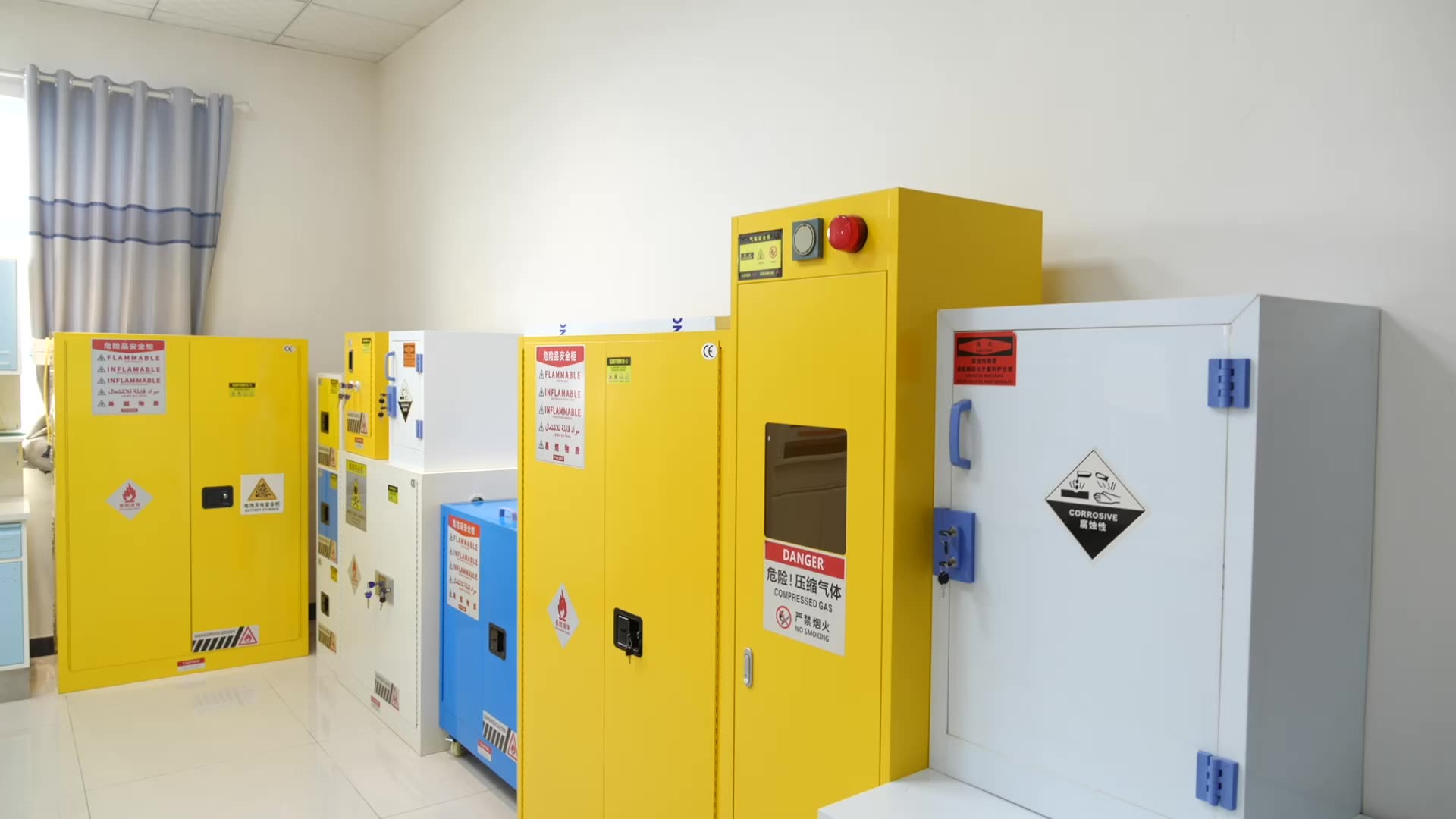Chemical storage cabinets are specialized cabinets designed to safely store hazardous chemicals in laboratories, industrial facilities, and other settings where hazardous substances are used or stored. These cabinets are constructed to meet strict safety standards and regulations to minimize the risk of accidents, spills, and exposure to harmful substances.
Types of Chemical Storage Cabinets
There are several types of
Chemical Storage Cabinets, including flammable storage cabinets, corrosive storage cabinets, and toxic substance storage cabinets. Each type is designed to safely store specific types of hazardous chemicals, providing containment and protection against spills, fires, and other hazards.
Flammable Storage Cabinets
Designed to safely store flammable liquids, these cabinets are constructed with fire-resistant materials and typically feature ventilation to prevent the buildup of flammable vapors.
Corrosive Storage Cabinets
Specifically built to store corrosive substances such as acids and bases, these cabinets are made of materials resistant to corrosion and equipped with spill containment features.
Toxic Substance Storage Cabinets
These cabinets are designed to securely store toxic chemicals, preventing contamination and exposure. They often come with features like sealed doors and warning labels.
Pesticide Storage Cabinets
Designed to safely store pesticides and other agricultural chemicals, these cabinets are typically made of materials resistant to corrosion and equipped with features to prevent leaks and spills.
Key Consideration
Key features of chemical storage cabinets typically include:
Material Construction
They are usually made of robust materials such as steel, which offer durability and chemical resistance.
Chemical Resistance
The interior surfaces of the cabinets are often coated with materials that are resistant to corrosion and chemical damage.
Safety Features
Cabinets may feature safety locks to prevent unauthorized access, as well as leak-proof trays or shelves to contain spills.
Labeling
Proper labeling and signage are essential for indicating the contents of the cabinet and any associated hazards.
Compliance
Cabinets should comply with relevant safety standards and regulations, such as those set forth by organizations like OSHA (Occupational Safety and Health Administration) or NFPA (National Fire Protection Association).
Size and Capacity
Cabinets come in various sizes and configurations to accommodate different quantities and types of chemicals.
Fire Resistance
Some cabinets are designed to be fire-resistant, providing an additional layer of protection in the event of a fire.
Selecting chemical Storage Cabinets
It’s crucial to carefully assess the specific needs and requirements of your facility when selecting chemical storage cabinets to ensure compliance with safety regulations and to minimize risks associated with handling hazardous materials. Regular inspection, maintenance, and training of personnel are also essential to ensure safe storage and handling practices. Choosing the right chemical storage cabinets is crucial for ensuring the safety of personnel and maintaining compliance with regulations. Consider the following key factors:
Chemical Compatibility
Ensure that the cabinet is suitable for the types of chemicals you intend to store, considering factors such as corrosiveness, flammability, and toxicity.
kaimtechworld.com
Size and Capacity
Select a cabinet that can accommodate your storage needs while allowing for proper segregation of different types of chemicals to prevent reactions.
Construction and Material
Opt for cabinets made of durable, chemical-resistant materials such as steel to withstand potential spills and corrosion.
Safety Features
Look for cabinets with features like ventilation systems, leak-proof shelves, and secure locking mechanisms to minimize risks of exposure, spills, and accidents.
Compliance
Ensure that the cabinets meet relevant safety standards and regulations, such as those set by OSHA and NFPA, to avoid potential fines and ensure workplace safety
Conclusion
Selecting the right chemical storage cabinets is paramount for maintaining a safe and compliant workplace environment. By considering factors such as chemical compatibility, construction quality, safety features, and regulatory compliance, medical lab equipment suppliers can ensure they provide cabinets that meet the unique needs of laboratories and industrial facilities. With proper selection and placement, these cabinets play a crucial role in minimizing risks associated with hazardous chemicals, protecting personnel, and preserving the integrity of the workspace. Invest in quality chemical storage cabinets from reputable
medical lab equipment suppliers to safeguard your facility and promote a culture of safety and responsibility.










